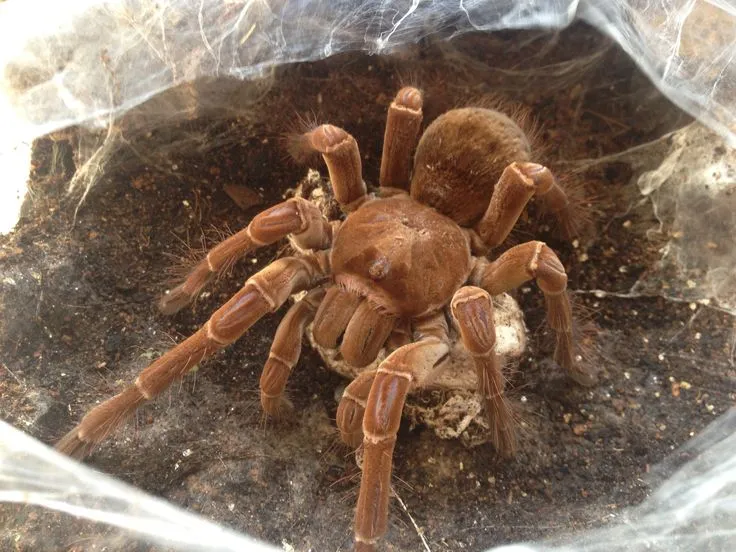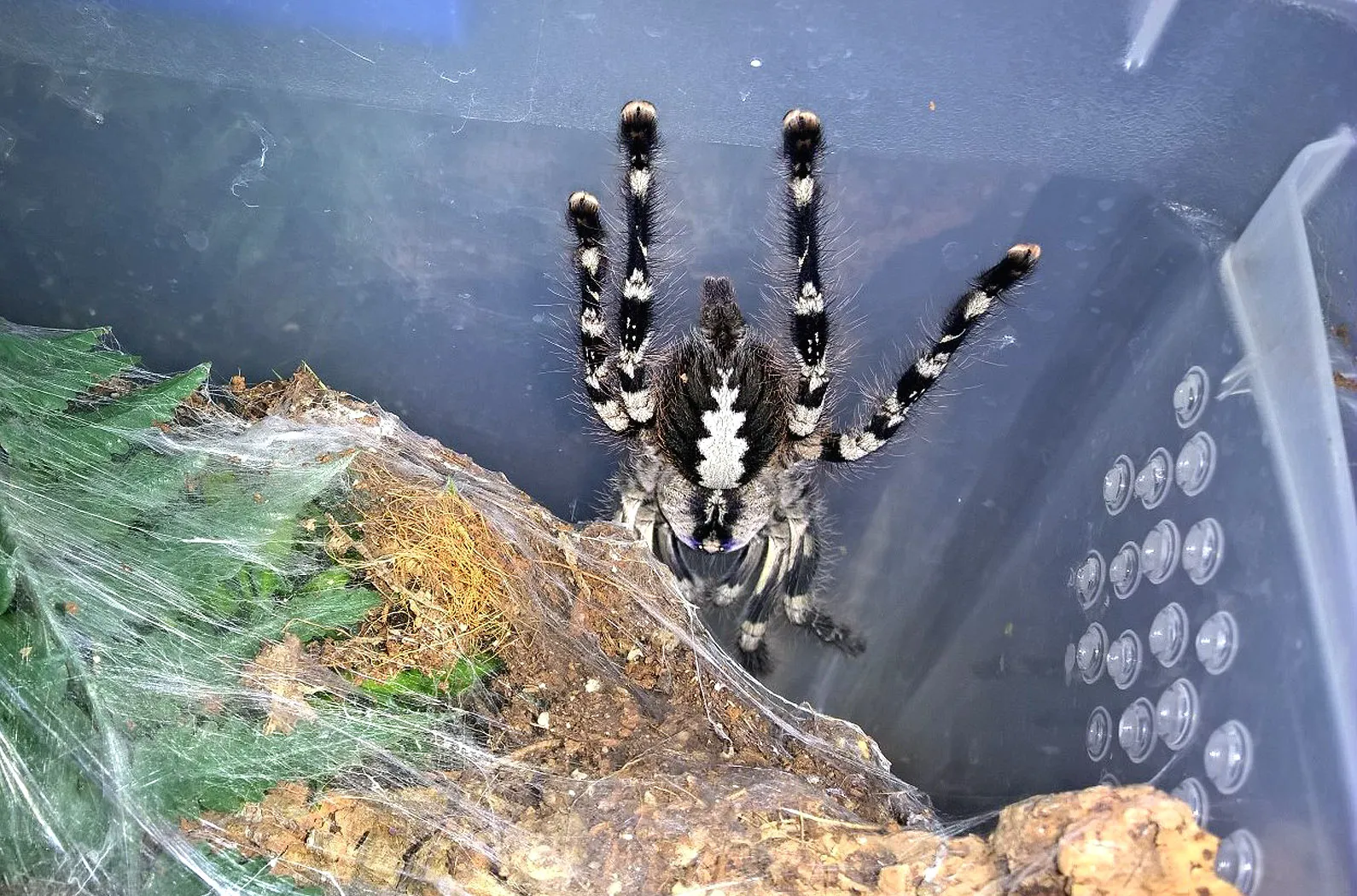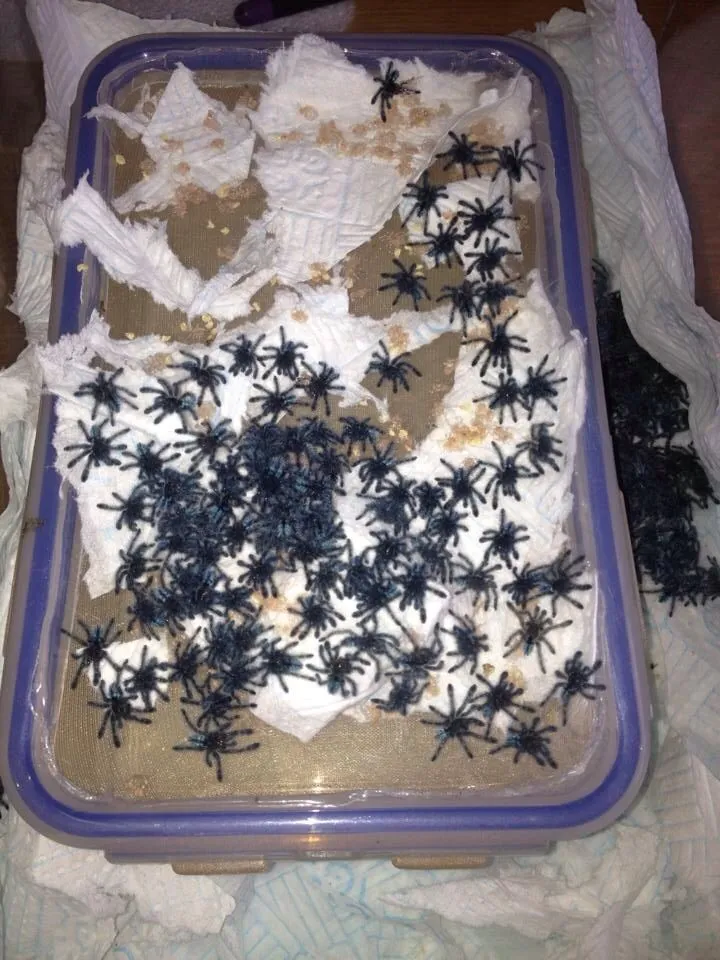Understanding Tarantula Breeding
Breeding tarantulas can be a fascinating endeavor for the dedicated arachnid enthusiast. It’s a complex process that requires careful planning, precise environmental control, and a deep understanding of tarantula behavior and biology. Success in tarantula breeding hinges on several key factors, including proper identification of the sexes, creating a suitable environment that mimics their natural habitat, and providing adequate nutrition. This comprehensive guide will walk you through each stage, from sexing your tarantulas to raising the tiny spiderlings, offering expert advice and tips to increase your chances of successful breeding.
Identifying Sex in Tarantulas
One of the most critical steps in breeding tarantulas is accurately determining the sex of your specimens. This is essential because only females can produce egg sacs. There are several methods for sexing tarantulas, with the most reliable being examining their exuviae (molted skins). Other methods include observing physical characteristics and behavioral patterns. It’s crucial to get this right before proceeding, as attempting to breed two males will obviously not yield any results, and could lead to injury or even death of one or both spiders. Correct sex identification is paramount to the process.
Physical Characteristics

In adult tarantulas, the most reliable method for sexing involves examining the exuviae for the presence of spermathecae (sperm storage organs) in females. Look for a small, pouch-like structure located on the underside of the female’s abdomen, near the book lungs, in the region between the two sets of book lungs. Males, on the other hand, possess a less obvious structure. Some species show a more pronounced sexual dimorphism, with males displaying longer legs and sometimes even different coloration, but this is not a universal trait and should not be solely relied upon for sex determination. The exuviae method is the gold standard.
Behavioral Clues
Observing the behavior of your tarantulas can provide supplementary clues. During the mating season, adult males often become restless and may wander more actively within their enclosure. They may also construct a sperm web, a small silken mat on which they deposit their sperm. The presence of a sperm web is a strong indicator of a male. However, behavior alone isn’t definitive, as various factors such as stress can influence behavior. Therefore, behavioral observation should be used in conjunction with exuviae examination and knowledge about the species’ specific traits.
Pre-Mating Preparation
Before introducing your tarantulas, proper preparation is essential. This includes ensuring both tarantulas are healthy, well-fed, and housed in appropriate enclosures. A healthy female is more likely to produce a viable egg sac, and a well-fed male will have more energy for the mating process. The environmental conditions in the enclosure also play a crucial role. Replicating the natural habitat of the tarantula species is paramount for success. Careful preparation significantly increases the chances of successful breeding and a healthy offspring.
Optimal Conditions

Creating an ideal environment for your tarantulas involves paying close attention to temperature, humidity, and other environmental factors. These factors directly impact the tarantula’s overall health, mating behavior, and the development of the eggs. A well-maintained environment mimics the tarantula’s natural habitat, reducing stress and increasing the likelihood of successful breeding. This includes ensuring that the enclosures are clean and appropriately sized for the species.
Temperature
Maintaining the correct temperature is vital for tarantula breeding. Most species thrive in temperatures ranging from 75-85°F (24-29°C). Temperature impacts metabolism, activity levels, and overall health. Use a thermometer to monitor the temperature within the enclosure and adjust the heating source if necessary. Ensure the temperature gradients exist within the enclosure, allowing the tarantulas to move to cooler or warmer areas as required. Consistent temperature is key, avoiding extreme fluctuations that could stress the animals.
Humidity
Humidity levels are just as crucial as temperature. The ideal humidity range varies depending on the species; some species are from arid regions while others are from tropical environments. Research the specific needs of your tarantula species and adjust the humidity accordingly. You can measure humidity using a hygrometer. Methods for increasing humidity include misting the enclosure, providing a water dish, and using a substrate that retains moisture, such as peat moss or coconut fiber. Proper ventilation is also essential to prevent the build-up of mold and mildew. Consistent humidity levels within a specific range is important for overall health, molting, and egg development.
Feeding

Proper feeding is crucial for successful breeding. Ensure both the male and female tarantula are well-fed and in good condition before attempting to breed them. Feed them a nutritious diet of appropriately sized insects, such as crickets, roaches, or mealworms, a few times a week. A female should be at her optimal size before mating, as the process of egg production demands a significant amount of energy. Avoid overfeeding, and remove any uneaten food to prevent mold or mites from infesting the enclosure.
Mating Process
The mating process is a delicate procedure that requires careful observation and intervention. Tarantula mating behavior can vary slightly between species. Generally, the male will approach the female, often drumming on the substrate or displaying his pedipalps. The male will then attempt to mate with the female. This process requires patience and keen observation to ensure a safe and successful mating. There can be risks involved during this phase, which is why understanding the intricacies of the mating behavior of your specific tarantula species is highly essential.
Introducing the Tarantulas
When introducing the male and female, be very careful. Many breeders prefer to introduce the male into the female’s enclosure, as the female is more territorial. Carefully place the male’s enclosure near the female’s enclosure for a few days to allow them to get used to each other’s presence, then carefully release the male into the female’s enclosure under your supervision. Make sure to be prepared to quickly separate them if the female shows aggression. Using a long pair of tongs or a stick to gently guide the male may be necessary. It’s a risky endeavor; being ready to separate them quickly is of utmost importance.
The Act of Mating

During mating, the male will use his pedipalps to transfer sperm to the female. This process can last anywhere from a few seconds to several minutes. The male should try to insert the pedipalps into the female’s epigastric furrow. It’s crucial to monitor the mating pair closely, as the female may attempt to eat the male after mating. If the female shows any sign of aggression, separate the tarantulas immediately to prevent injury or death of the male. Sometimes, the male will quickly retreat after depositing sperm, and separation isn’t necessary.
Post-Mating Procedures
Once the mating process is complete (or if the female shows aggression), it’s important to separate the tarantulas. The female will then begin the process of producing an egg sac. During this period, it’s essential to provide her with proper care and nutrition. This crucial phase impacts the viability of the eggs and the health of the spiderlings. Careful observation is needed to ensure both the female’s health and successful egg sac development.
Separation
After mating, immediately remove the male from the female’s enclosure to prevent the risk of the female consuming him. Place the male back in his enclosure. The female can be left in her enclosure. Ensure her enclosure is clean and well-maintained. Monitor her behavior, looking for signs of egg sac production.
Caring for the Female

After mating, the female will begin producing an egg sac. During this time, increase the female’s food supply and continue to maintain optimal environmental conditions. Ensure there is plenty of water available. Observe the female for any unusual behaviors. She will often become more reclusive and may stop eating as she focuses on caring for her eggs. Maintaining a stress-free environment is essential for the success of the process.
Egg Sac Management
Once the female has produced an egg sac, you have a few choices. You can either leave the egg sac with the female, or you can remove it to incubate the eggs artificially. This decision depends on the species and the breeder’s preferences. Either way, careful management of the egg sac is crucial for successful hatching. If you decide to remove the egg sac, this procedure is called ‘pulling’ the sac.
Incubation and Hatching
If you choose to remove the egg sac, place it in an incubator or a container with controlled temperature and humidity levels. The ideal conditions will vary depending on the tarantula species. Regularly check the egg sac for mold or other issues. Incubation periods vary, but it usually takes several weeks to months for the eggs to hatch. Monitor the sac closely for any changes. The time it takes for an egg sac to hatch depends on the species and the environmental conditions, but usually takes several weeks or months.
Raising Spiderlings

Once the spiderlings hatch, they require specialized care. This includes providing proper housing, food, and environmental conditions. Raising spiderlings requires a lot of time, patience, and attention to detail. From the initial days after hatching, you need to provide suitable housing and access to food. The well-being of the spiderlings depends on your ability to replicate conditions that will encourage healthy development.
Initial Care
Newly hatched spiderlings are very small and delicate. Provide them with a shallow water dish and a suitable substrate that retains moisture, such as vermiculite or sphagnum moss. The temperature and humidity levels need to be maintained with utmost care. Ensure proper ventilation to prevent mold growth. Spiderlings require frequent feeding. At the beginning of their life, they are fragile, and their survival hinges on the care provided during this initial period.
Feeding Spiderlings
Spiderlings require a steady supply of appropriately sized food. Fruit flies, pinhead crickets, and pre-killed small insects are common choices. Feed the spiderlings frequently, usually every other day or every day, depending on their growth rate. Remove any uneaten food to prevent mold or mites. Regular feeding ensures they receive adequate nutrition, leading to healthy growth. Careful observation will help you determine if the spiderlings are eating and if the food is the correct size.
Housing Spiderlings
Spiderlings should be housed individually in small containers or in communal enclosures, depending on the species and the breeder’s preference. Ensure each spiderling has its own space, with plenty of ventilation, substrate, and hiding places. Provide a shallow water dish to prevent the spiderlings from drowning. As they grow, you’ll need to move them to larger enclosures. Regular cleaning is vital to maintain a healthy environment, avoiding mites and fungi.
